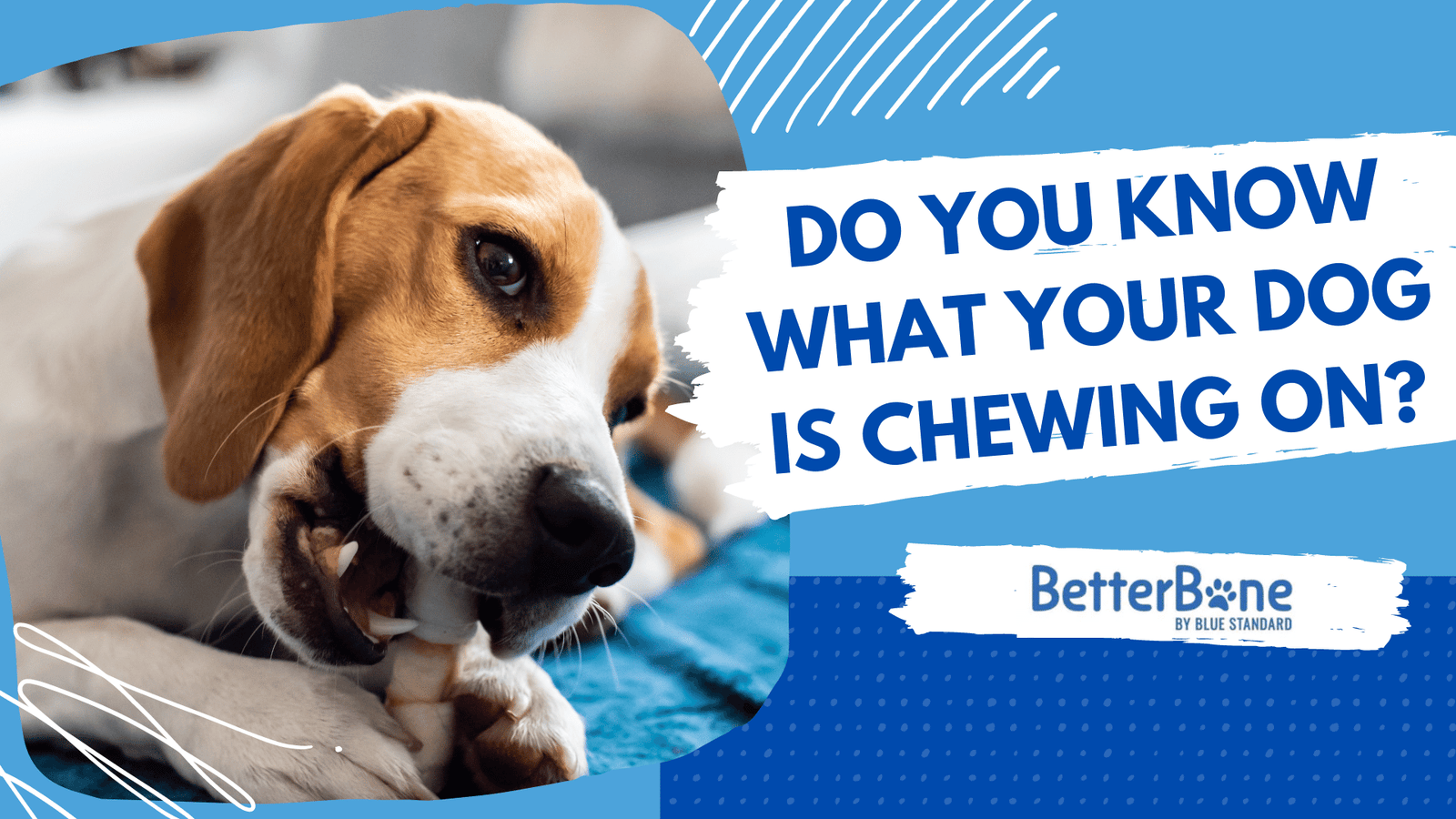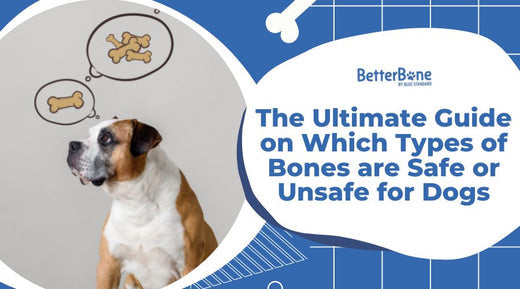“Why is rawhide bad for dogs?” may be a question that has come to your attention after looking up healthy dog chews and treats.
After all, rawhide is one option that usually comes to mind when pet parents search for popular chews for canine companions.
However, much information has come to light in recent years that tells you how rawhide is bad for dogs.
Here, we will take a deeper look into what rawhide is and why rawhide is not one of the things your dogs should be chewing on.
Let’s start.
What is rawhide?

Rawhide is pretty much what it sounds like: the inner layer of skin typically derived from livestock like cows, horses, sheep, water buffalo, and occasionally, even pigs.
Now, this may sound like a natural chew when described this way. However, unlike what many people believe, rawhide is not just a nice piece of dried animal skin.
On the contrary, it uses leftovers from the leather industry…and here’s how they make it.
How are rawhide bones made?
To turn rawhide into its traditional dog bone form, the inner part of animal hide undergoes a series of chemical processes.
1) Processing rawhide
First, slaughterhouses brine the hide to slow down its decomposition process.
They then ship the brined hides to a tannery to remove the fat and hair using chemicals like highly toxic sodium sulfide or an ash-lye solution.
Afterward, more chemicals are used to puff the hide and make it easier to split into layers.
The inner layer is then cleaned and whitened with water, hydrogen peroxide, or other more potent chemicals before it is dried.
This removes the smell that has developed from the now-decayed leather.
2) Coloring rawhide
Now that the leathery by-product has been whitened, it’s time to make it look delicious for your pets.
To this end, rawhide is sometimes basted or smoked for added flavoring before they are dyed or even painted in different colors.
The decorative process may also include the use of chemicals like titanium oxide and toxic products like FD&C Red 40.
3) Preserving rawhide
This last step typically involves preserving the rawhide by-product with chemicals like chromium salts and formaldehyde before molding it into different shapes and sizes.
Rawhide dog bone manufacturers may also use glue to hold the shapes together.
Why is rawhide bad for dogs?

By the time the rawhide dog chews make it to dogs’ bowls, they bear little similarity to their original form.
On its own, this difference in appearance isn’t necessarily a cause for concern.
However, how the livestock was raised, where it was raised, and the conditions it was raised in can influence the product’s overall safety and quality.
More importantly, there are three reasons why rawhide is bad for dogs: 1) the chemical process it goes through, 2) the risk of choking, and 3) contamination and poisoning.
1) Chemicals in dog rawhide bones
As we’ve explained about how rawhide bones are made, imported dog rawhide bones may contain an extra dose of chemicals compared to rawhide bones made in the U.S.A.
Furthermore, with the countless chemicals it is bathed and soaked in, not much “natural” remains, even in large rawhide bones.
Just this makes rawhide bones not good for dogs.
2) A choking hazard
In addition to the chemicals, another reason why rawhide is bad for dogs is that it is indigestible and can result in choking.
To be specific, large rawhide bones can get stuck in the digestive tract or even in the esophagus.
Since they are indigestible, they can sit in the stomach for long periods without passing through the gastrointestinal tract.
Even worse, they can expand up to four times their usual size in your pets’ stomachs.
This can lead to digestive problems, ultimately creating dangerous intestinal obstructions that can cause death if not brought out.
3) Contamination and poisoning
Did you know that salmonella is a huge concern for dog rawhide bones?
This is especially true considering that not all rawhides are produced with the same quality and safety regulations.
In fact, from 2008 until 2011, the Federal Drug Administration (FDA) recalled six dog rawhide chew brands as a result of salmonella contamination and poisoning.
Apart from being fatal to dogs, salmonella can also cause complications that can be dangerous to humans.
Are rawhide bones okay for dogs?
Given the information above, there is no way that rawhide bones are good for dogs.
To put it simply, your fur babies should not be chewing on dog rawhide bones. This is because rawhide bones for puppies can also make them sick.
The risks far outweigh the benefits of rawhide, making dogs better off chewing on bones (or toys) that are hypoallergenic and without chemicals.
This is true even if rawhide manufacturers claim that chewing on dog rawhide bones can clean and strengthen your dogs’ teeth.
Think of it this way.
Although dog rawhide bones start out hard, they get softer as your canine companions chew on them.
Your dogs can then pull small chunks of the rawhide chews away and swallow them.
But then, as we explained, the rawhide chunks don’t dissolve in the digestive tract.
And even if the rawhide is too hard that chewing doesn’t soften it, it can still fracture your animals’ teeth.
Does rawhide for dogs have calories?
Many resources will tell you that, on average, rawhide contains about 10 calories per chew.
On the other hand, a single rawhide dog treat measuring 2” x 6” and is ⅛” thick generally contains 50-100 calories.
So while it’s not a high-calorie dog treat, dog rawhide bones can still lead to weight gain if consumed in high amounts.
It's important, therefore, that you buy non-rawhide bones instead for your furbabies.
When to throw away rawhide dog bones?
Dog rawhide bones have an unlimited shelf life as long as they remain dry.
However, if you bought basted rawhide dog chews, be prepared for bugs since these dog treats have added flavoring.
You should also replace rawhide that requires more than a week to chew since they are already prone to dirt and bacteria buildup.
What is better for dogs than rawhide?
Considering all the harm and disadvantages that rawhide can bring to your pets, many vets recommend buying natural alternatives to dog rawhide bones.
Natural rawhide alternatives, like the PEFC-certified BetterBone, are vital not just for dogs’ safety but also for their dental health.
BetterBone All-Natural Dog Bone, for instance, is naturally durable to suit every type of chewer. It also has all the benefits of safe dog bones.

It is also eco-friendly and hypoallergenic since it was produced using only two sustainable ingredients: cellulose and vegetable oil.
This gives BetterBone a unique trident-shaped design that is non-toxic, non-splintering, and keeps your pup healthy and satiated while reducing environmental impact.








